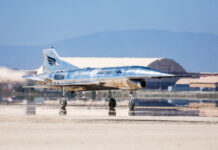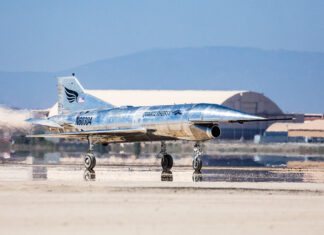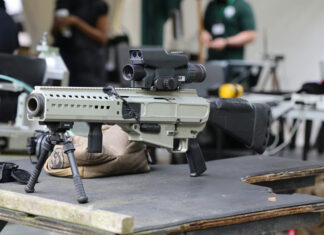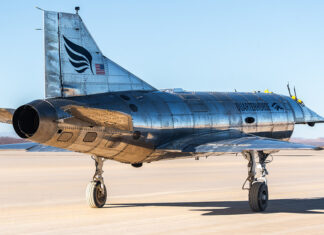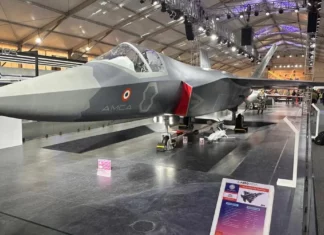
This comprehensive market assessment builds upon Defense Update’s previous Q1 2025 market brief, incorporating performance data from mid-tier and international defense companies, emerging technology players, and significant post-period geopolitical developments.
The first quarter of 2025 confirmed the defense sector’s exceptional momentum across all market tiers, from major U.S. primes to specialized technology providers and international contractors. With significant post-period developments, including potential NATO spending increases and major Middle East defense deals, the sector demonstrates unprecedented strength and a growth trajectory extending well into 2025 and beyond. Check Part I of the Q1 market review published on April 25, 2025
Defense Market Performance Overview
The defense market demonstrated remarkable resilience and growth throughout Q1 2025, with several companies achieving record-breaking financial milestones. This performance was underpinned by three primary drivers: continued global security challenges requiring immediate response capabilities, government commitments to defense modernization programs, and accelerating demand for advanced technologies that provide tactical and strategic advantages.
US Companies Performance Highlights
Honeywell Aerospace Technologies (HON) delivered outstanding results with a 14% year-over-year sales increase, driven by robust demand across both commercial aftermarket and defense sectors. The company’s total backlog reached a record $36.1 billion, with aerospace and defense representing a substantial portion. The planned spin-off of the Aerospace business signals a strategic focus on enhancing operational agility in this critical market segment.
Leidos Holdings (LDOS) continued its strong trajectory in defense modernization, intelligence solutions, and advanced technology integration. The company secured significant contracts across integrated defense systems, mission IT, cyber solutions, and logistics capabilities, contributing to a healthy backlog position. Strategic investments in AI, autonomous systems, and digital transformation initiatives position Leidos well for future growth in an increasingly technology-driven defense landscape.
Palantir Technologies (PLTR) emerged as a standout performer, with government revenue surging 45% year-over-year to $373 million, marking the seventh consecutive quarter of accelerating growth. The company’s success was primarily driven by defense contracts for AI-powered battlefield analysis and automated military functions. A significant NATO contract contributed to a 45% increase in international government revenue, while the AI Platform (AIP) gained traction in complex aerospace applications, including satellite data analysis. The total remaining deal value reached $5.97 billion.
Kratos Defense & Security Solutions (KTOS) demonstrated robust growth driven by its hypersonic systems, unmanned technologies, and propulsion solutions portfolio. With a hypersonic opportunity pipeline exceeding $12.6 billion, the company is well-positioned in one of the defense market’s most rapidly expanding segments. The Unmanned Systems division showed particular strength with 6.2% organic revenue growth and an impressive book-to-bill ratio of 1.8:1, especially for the Valkyrie drone platform. Overall revenue increased 9.2% year-over-year to $302.6 million, with backlog growing to $1.508 billion.
Curtiss-Wright Corporation (CW) reported significant growth across both U.S. and international defense markets, driven by modernization programs and new platform acquisitions. Key program wins included contracts for next-generation fighter jets, naval systems, and missile defense platforms. The defense and aerospace segment contributed meaningfully to overall margin expansion while maintaining a strong backlog position.
Rocket Lab USA (RKLB) achieved impressive Q1 results, with revenue reaching $122.6 million, representing 32% year-over-year growth. The company secured an important position in the defense and government sector through on-ramping to the U.S. Department of Defense’s $5.6 billion National Security Space Launch (NSSL) Phase 3 Lane 1 program and securing launch contracts with the U.S. Air Force. The implementation of a new holding company structure reflects the company’s expanding national security focus, while a growing backlog of $1.067 billion is increasingly driven by government and defense demand.
International Defense Players
International companies, particularly European defense contractors, demonstrated robust performance driven by regional security priorities:
Thales (HO.PA): Defense sales reached €2.685 billion (up 16.5% YoY), though order intake declined 58% due to an exceptionally high comparison base from Q1 2024’s large contracts (Indonesian Rafale, Middle East air surveillance). Five major contracts worth €707 million were secured, including Dutch defense simulator modernization and French SCORPION program vetronics.
Saab AB (SAAB.ST) demonstrated strong performance particularly in the European market, driven by evolving regional security priorities. The company reported increased orders across all segments, with notable contracts from Latvia for RBS 70 air defense systems and Germany for ground-based surveillance radars. Order backlog grew 8% year-over-year to SEK 152 billion, with international markets representing 67% of new orders. Defense segment revenue increased 13% year-over-year while operating margins expanded.
Rheinmetall AG (RHM.DE) delivered exceptional results with defense sales growth of 33%, reaching €1.795 billion. Defense EBIT surged 96% year-over-year to €206 million, resulting in a record defense operating margin of 11.5%. Defense operations now represent 78% of group sales. The company’s record €62.6 billion order book reflects successful strategies including production scalability investments, global footprint expansion, and technological innovation in next-generation air defense and infantry modernization.
Israel Aerospace Industries (IAI) provided important context with record-breaking 2024 results showing revenue of $6.11 billion (up 15%) and net income surging 55% to $493 million. The order backlog reached a historic $25 billion, with military sales comprising 85% of total revenue. The ongoing conflict environment has driven unprecedented domestic and international demand while accelerating innovation and production capabilities.
Technology and Innovation Trends
The quarter highlighted several critical technology areas experiencing accelerated development and deployment:
Artificial Intelligence Integration: Companies like Palantir demonstrated the increasing adoption of AI-powered solutions for battlefield analysis, automated military functions, and complex aerospace applications. This trend represents a fundamental shift toward intelligent, autonomous defense capabilities.
Hypersonic Systems: Kratos’s substantial hypersonic opportunity pipeline underscores the growing strategic importance of hypersonic weapons and defense systems as nations seek next-generation strike and defensive capabilities.
Unmanned Systems: Strong performance in drone and autonomous platform segments reflects the continuing evolution of warfare toward remotely operated and autonomous systems, with applications ranging from reconnaissance to combat operations.
Space and Launch Capabilities: Rocket Lab’s success in securing government launch contracts demonstrates the critical importance of assured space access for national security applications.
Post-Period Developments and Market Outlook
NATO Defense Spending Initiative
Discussions within NATO regarding substantially increased defense spending targets represent perhaps the most significant potential market catalyst. Proposals to raise spending commitments from the current 2% of GDP to potentially 3.5% on direct military spending, with an additional 1.5% on broader security expenditures (totaling 5% of GDP by 2032), would create massive, sustained demand increases across the alliance. This initiative, driven by ongoing Ukrainian conflict dynamics and U.S. pressure, would particularly benefit companies supplying conventional military capabilities, modernization programs, and advanced technologies to NATO member nations.
Regional Conflict Dynamics
The brief but intense India-Pakistan conflict in early May 2025, featuring the “first drone battle” between nuclear-armed nations, highlighted several critical market dynamics. The conflict underscored the operational importance of advanced unmanned systems, missile defense capabilities, and border security technologies. Both nations have increased defense allocations following the conflict, creating opportunities for companies specializing in these technologies while also highlighting geopolitical engagement risks.
Middle East Defense Commitments
President Trump’s May 2025 Middle East tour resulted in the announcement of substantial defense agreements, including a reported $142 billion defense sales package with Saudi Arabia (the largest in U.S. history) and $42 billion in weapons purchases by Qatar. These deals encompass air force advancement related primarily to Boeing (NYSE: BA), (NYSE: GA), air and missile defense (NYSE: RTX, NYSE: LMT), General Atomics (GA-ASI), maritime security, land forces modernization, and information systems (NASDAQ: PLTR). The agreements reinforce the Middle East as a critical market for advanced military capabilities and represent a significant order influx for U.S. defense contractors.
Ukraine Conflict Evolution
While discussions continue regarding potential ceasefire arrangements, the fundamental market drivers remain strong. Even if active hostilities were to pause, the need for extensive NATO and European re-stockpiling, continued modernization based on conflict lessons learned, and long-term strategic competition with Russia would likely sustain high defense spending levels. The focus might shift from immediate battlefield consumables to inventory replenishment, capability upgrades, and long-term deterrence strengthening.
Market Challenges and Risk Factors
Despite the strong overall performance, several companies face notable challenges:
Archer Aviation (ACHR) continues working through significant hurdles including regulatory and certification delays, production scaling challenges, supply chain risks, and the complexities of hybrid powertrain development while operating in a pre-revenue phase.
Supply Chain and Production Constraints: Multiple companies, including Saab, reported challenges with semiconductor lead times and the need for production line investments and workforce training to meet growing demand.
Regulatory and Certification Requirements: The increasing complexity of advanced defense systems requires navigation of evolving regulatory frameworks, particularly for new technology areas like autonomous systems and space-based platforms.
Conclusion and Outlook
The Q1 2025 defense market review reveals a sector experiencing sustained, broad-based growth driven by fundamental geopolitical and technological forces. Strong financial performances across diverse market segments, from traditional defense contractors to emerging technology providers, demonstrate the market’s robust health and growth trajectory.
Post-period developments, including potential NATO spending increases, regional conflicts highlighting technology needs, and major Middle East defense commitments, strongly suggest continued positive momentum. While challenges exist in areas such as supply chain management and regulatory compliance, the underlying drivers of increased defense spending—geopolitical risk, technological competition, and modernization imperatives—remain firmly established.
The defense market appears well-positioned for sustained growth throughout 2025 and beyond, with companies successfully positioned in key technology areas, international markets, and modernization programs likely to benefit most from the evolving security environment and increasing government commitments to defense capabilities.
This quarterly review is based on publicly available financial disclosures and market analysis through Q1 2025, with post-period developments included for a comprehensive market context.



